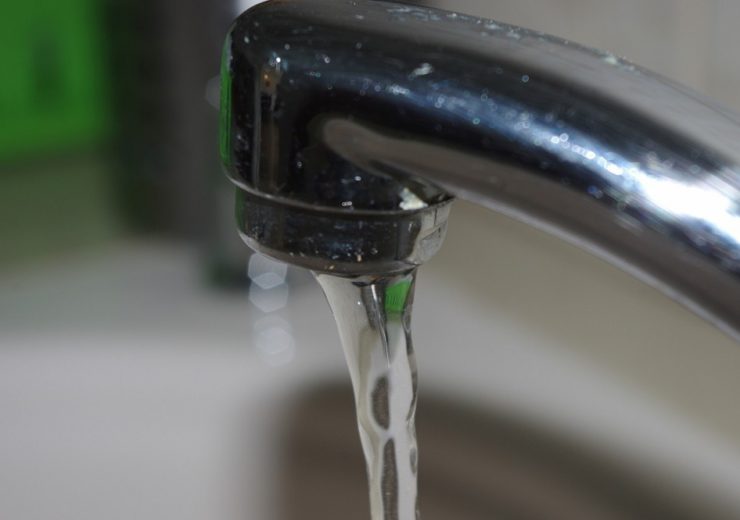Water technology companies are increasing access to water, monitoring leaks and enabling communities to identify contamination in the supply before it becomes a catastrophe

In the United States alone, the average household wastes a trillion gallons of water each year, according to the Environmental Protection Agency – but a new wave of technology companies are trying to fix a statistic that should cause concern.
With the World Bank predicting two-thirds of the global population will run short of fresh drinking water by 2025, it has opened a market for tech firms to improve access to clean, affordable and sustainably-produced water using software and hardware.
The global problem has led to initiatives like the United Nations’ World Water Day, which is held today (22 March) with the theme of “leave no one behind” and an overarching goal to give everyone access by 2030.
There’s also an emerging water tech eco-system.
Last year, the not-for-profit start-up accelerator Imagine H2O launched an Urban Drinking Water Scarcity Challenge, offering a $1m (£760,000) prize pot to start-ups dubbed “waterpreneurs” that had innovative solutions to water access problems in urban areas.
Backed by the eco-friendly sailing solutions firm 11th Hour Racing and water purifier company Bluewater, the competition recognised three winners.
Imagine H20 also runs an accelerator programme for water tech start-ups to provide connections to investors, mentorship and “showcase opportunities”.
To mark World Water Day, we profile water technology companies trying to change the way we access water using everything from artificial intelligence to smartphone apps.
Water technology companies
change: WATER Labs

A member of the Imagine H2O 2018 accelerator programme, change: WATER Labs is creating a portable toilet that does not require water and evaporates 95% of sewage without using energy.
The toilet produced by the Cambridge, Massachusetts-based firm is designed for those in poor, remote areas of the world that can’t access plumbing or power.
The company claims 2.6 billion people have yet to gain access to a flushable toilet, and one billion defecate openly.
SmartTerra
Using SmartTerra’s AI-powered water intelligence platform, Indian cities are being equipped with the tools for data-driven decision-making when it comes to identifying service failures, disruptions and opportunities for infrastructure upgrades.
It says the technology helps municipalities in the country to transition from paper logs, employee memory and Microsoft Excel spreadsheets to organised operations and maintenance.
After being one of the three winners in last year’s Urban Drinking Water Scarcity Challenge, the Bengaluru company was given funding for pilot projects in two cities within the Indian state of Telangana.
Spout
US start-up Spout has created the Waterlyzer, an on-demand, in-home testing device that provides high-accuracy water quality results in real-time.
It can be attached to a smartphone, analyses tap water and identifies any contaminants that are of concern within minutes.

The technology enables consumers to understand what’s in the water they drink, communities to activate against potential threats to health and safety, and utilities to find a solution before a contamination incident becomes a catastrophe.
As part of its funding from being a winner of Imagine H20’s challenge, Spout, based in Denver, Colorado, is testing Waterlyzer in US communities with 500 homes.
CityTaps
Those living in poor, urban areas in countries short on clean water plumbing can pay for fresh water through a balance system devised by CityTaps.
Users with access to a CityTaps smart water meter can buy running water from the device by setting up a pre-paid balance through whatever mobile phone they have – meaning they could pay for water through mobile credit.
Sponsors and partners of CityTaps include Microsoft BizSpark, Amazon Web Services and the telecoms company Orange.
Fracta

Artificial intelligence technologies seem to be finding their way into every aspect of our lives, and water is no exception.
Fracta – which was among the water technology companies in the Imagine H2O 2018 accelerator programme – is using machine learning robots to anticipate the likelihood of underground water pipes leaking and malfunctioning, so they can be dealt with pre-emptively.
The US-based company says its AI software makes use of geographical and environmental data on top of information on a pipe’s break history to provide assessments on problems it could pose.
Instream Water
Instream Water has created a renewable water bottle and corresponding app that allows users to set what type of water they want dispensed from the firm’s refill stations.
Customers are able to set how much water they want to be released and whether they want it chilled, room temperature or sparkling.
Its fresh water costs between one cent to three cents an ounce and is paid for via a balance that users set on the smartphone app.
Instream Water refill stations are initially only available in the US state of Colorado – though this could change at a later date.
Zero Mass Water
Zero Mass Water has developed a solar and air panel that can capture several bottles of drinkable water from the atmosphere.
The company claims its Source device can collect as much as 20 bottles of water on a sunny day, though it does mention that it provides less in cooler climates.

Panels have so far been installed in several intensely hot countries, including places like Australia, India and Mexico.
According the technical specifications, the Source device can hold 30 litres of water and produce between four and ten litres a day dependent on weather conditions.


